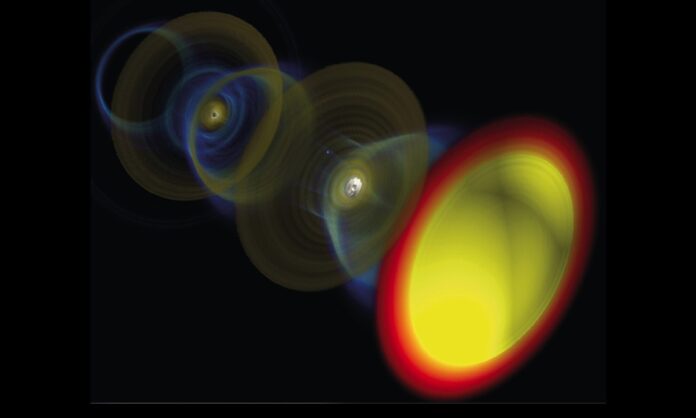Scientists are exploring new ways of creating super-bright light sources by using quasiparticles, which are collective motions of many electrons. Quasiparticles have remarkable properties that defy the usual laws of physics, such as travelling faster than light and surviving extreme conditions like near a black hole.
A team of researchers from Portugal, the US, and France has published a new study in Nature Photonics ¹ where they propose how to use quasiparticles in plasmas to generate powerful light sources. Plasmas are states of matter where electrons are separated from atoms, creating a sea of charged particles. The researchers used advanced computer simulations on supercomputers to study the behaviour of quasiparticles in plasmas.
They found that quasiparticles can produce very bright light by emitting radiation that mimics the motion of a particle moving faster than light or an oscillating particle. This is possible because quasiparticles are not bound by the same constraints as individual particles and can move in sync with each other.
“Quasiparticles are fascinating because they can do things that would be impossible for single particles,” says John Palastro, one of the authors of the study and a scientist at the University of Rochester. “The radiation from all the electrons can look like a particle moving faster than light or an oscillating particle, even though there is no electron locally that is doing that.”
The researchers believe that quasiparticle-based light sources could have many applications in science and technology, such as non-destructive imaging to scan for viruses, understanding biological processes like photosynthesis, manufacturing computer chips, and exploring the behaviour of matter on planets and stars.
“Quasiparticles offer a lot of flexibility,” says Bernardo Malaca, the lead author of the study and a doctoral student at IST. “We can control their speed, direction, and shape to create different types of light sources.”
The advantage of quasiparticle-based light sources is that they could be much smaller and more accessible than existing ones, such as free electron lasers, which are very large and expensive. Quasiparticles could produce very bright light with just a short distance to travel, making them suitable for smaller labs and facilities.
The researchers hope that their study will inspire further research and development of quasiparticle-based light sources, which could lead to new discoveries and innovations in various fields.
Reference:
Bernardo Malaca et al, Coherence and superradiance from a plasma-based quasiparticle accelerator, Nature Photonics (2023). DOI: 10.1038/s41566-023-01311-z.
